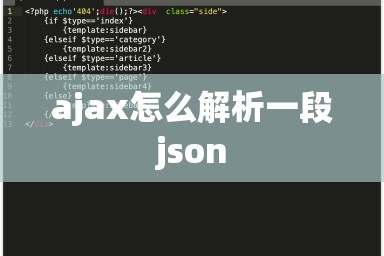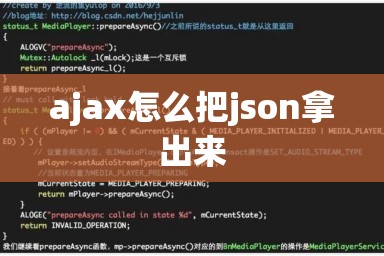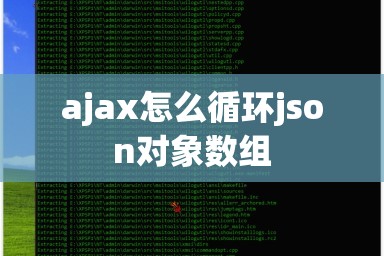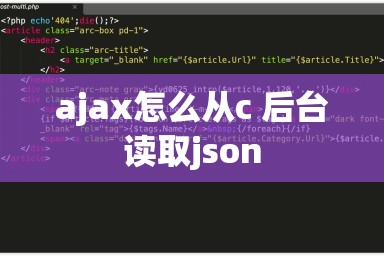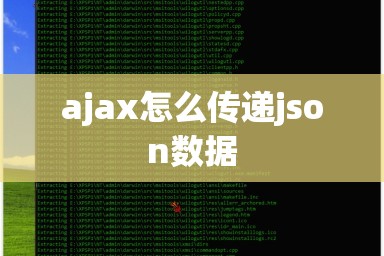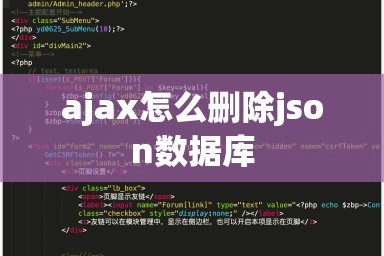Java 调用第三方接口方法
一、 通过JDK网络类Java.net.HttpURLConnection
1.java.net包下的原生java api提供的http请求
使用步骤:
1、通过统一资源定位器(java.net.URL)获取连接器(java.net.URLConnection)。
2、设置请求的参数。
3、发送请求。
5、关闭输入流。
2.HttpClientUtil工具类
/**
* jdk 调用第三方接口
* @author hsq
*/
public class HttpClientUtil2 {
/**
* 以post方式调用对方接口方法
* @param pathUrl
*/
public static String doPost(String pathUrl, String data){
OutputStreamWriter out = null;
BufferedReader br = null;
String result = "";
try {
URL url = new URL(pathUrl);
//打开和url之间的连接
HttpURLConnection conn = (HttpURLConnection) url.openConnection();
//设定请求的方法为"POST",默认是GET
//post与get的不同之处在于post的参数不是放在URL字串里面,而是放在http请求的正文内。
conn.setRequestMethod("POST");
//设置30秒连接超时
conn.setConnectTimeout(30000);
//设置30秒读取超时
conn.setReadTimeout(30000);
// 设置是否向httpUrlConnection输出,因为这个是post请求,参数要放在http正文内,因此需要设为true,默认情况下是false;
conn.setDoOutput(true);
// 设置是否从httpUrlConnection读入,默认情况下是true;
conn.setDoInput(true);
// Post请求不能使用缓存
conn.setUseCaches(false);
//设置通用的请求属性
conn.setRequestProperty("accept", "*/*");
conn.setRequestProperty("connection", "Keep-Alive"); //维持长链接
conn.setRequestProperty("Content-Type", "application/json;charset=utf-8");
//连接,从上述url.openConnection()至此的配置必须要在connect之前完成,
conn.connect();
/**
* 下面的三句代码,就是调用第三方http接口
*/
//获取URLConnection对象对应的输出流
//此处getoutputStream会隐含的进行connect(即:如同调用上面的connect()方法,所以在开发中不调用上述的connect()也可以)。
out = new OutputStreamWriter(conn.getoutputStream(), "UTF-8");
//发送请求参数即数据
out.write(data);
//flush输出流的缓冲
out.flush();
/**
* 下面的代码相当于,获取调用第三方http接口后返回的结果
*/
//获取URLConnection对象对应的输入流
InputStream is = conn.getInputStream();
//构造一个字符流缓存
br = new BufferedReader(new InputStreamReader(is));
String str = "";
while ((str = br.readLine()) != null){
result += str;
}
System.out.println(result);
//关闭流
is.close();
//断开连接,disconnect是在底层tcp socket链接空闲时才切断,如果正在被其他线程使用就不切断。
conn.disconnect();
} catch (Exception e) {
e.printstacktrace();
}finally {
try {
if (out != null){
out.close();
}
if (br != null){
br.close();
}
} catch (IOException e) {
e.printstacktrace();
}
}
return result;
}
/**
* 以get方式调用对方接口方法
* @param pathUrl
*/
public static String doGet(String pathUrl){
BufferedReader br = null;
String result = "";
try {
URL url = new URL(pathUrl);
//打开和url之间的连接
HttpURLConnection conn = (HttpURLConnection) url.openConnection();
//设定请求的方法为"GET",默认是GET
//post与get的不同之处在于post的参数不是放在URL字串里面,而是放在http请求的正文内。
conn.setRequestMethod("GET");
//设置30秒连接超时
conn.setConnectTimeout(30000);
//设置30秒读取超时
conn.setReadTimeout(30000);
// 设置是否向httpUrlConnection输出,因为这个是post请求,参数要放在http正文内,因此需要设为true,默认情况下是false;
conn.setDoOutput(true);
// 设置是否从httpUrlConnection读入,默认情况下是true;
conn.setDoInput(true);
// Post请求不能使用缓存(get可以不使用)
conn.setUseCaches(false);
//设置通用的请求属性
conn.setRequestProperty("accept", "application/x-www-form-urlencoded;charset=utf-8");
//连接,从上述url.openConnection()至此的配置必须要在connect之前完成,
conn.connect();
/**
* 下面的代码相当于,获取调用第三方http接口后返回的结果
*/
//获取URLConnection对象对应的输入流
InputStream is = conn.getInputStream();
//构造一个字符流缓存
br = new BufferedReader(new InputStreamReader(is, "UTF-8"));
String str = "";
while ((str = br.readLine()) != null){
result += str;
}
System.out.println(result);
//关闭流
is.close();
//断开连接,disconnect是在底层tcp socket链接空闲时才切断,如果正在被其他线程使用就不切断。
conn.disconnect();
} catch (Exception e) {
e.printstacktrace();
}finally {
try {
if (br != null){
br.close();
}
} catch (IOException e) {
e.printstacktrace();
}
}
return result;
}
}
3.第三方api接口
/**
* @author hsq
*/
@RestController
@RequestMapping("/api")
public class HelloWorld {
private static final Logger log= LoggerFactory.getLogger(HelloWorld.class);
@GetMapping ("/getHello")
public Result getHelloWord(){
log.info("进入到api接口.......");
return Result.success("hello world api get 接口数据");
}
@PostMapping("/postHello")
public Result postHelloWord(@RequestBody User user){
log.info("进入post 方法.....");
System.out.println(user.toString());
return Result.success("hello world api post接口数据");
}
}

4.测试类
@Test
public void testJDKApi(){
//测试get方法
String s = HttpClientUtil2.doGet("http://localhost:9092/api/getHello");
System.out.println("get方法:"+s);
//测试post方法
User user = new User();
user.setUname("胡萝卜");
user.setRole("普通用户");
//把对象转换为json格式
String s1 = JsonUtil.toJson(user);
String postString = HttpClientUtil2.doPost("http://localhost:9092/api/postHello",s1);
System.out.println("post方法:"+postString);
}
结果:

二、通过Apache common封装好的HttpClient
1.引入依赖
<!--HttpClient-->
<dependency>
<groupId>commons-httpclient</groupId>
<artifactId>commons-httpclient</artifactId>
<version>3.1</version>
</dependency>
<!--json-->
<dependency>
<groupId>com.alibaba</groupId>
<artifactId>fastjson</artifactId>
<version>1.2.28</version>
</dependency>
2.httpClientUtil
/**
*httpClient的get请求方式
* 使用getmethod来访问一个URL对应的网页实现步骤:
* 1.生成一个HttpClient对象并设置相应的参数;
* 2.生成一个getmethod对象并设置响应的参数;
* 3.用HttpClient生成的对象来执行getmethod生成的Get方法;
* 4.处理响应状态码;
* 5.若响应正常,处理HTTP响应内容;
* 6.释放连接。
* @author hsq
*/
public class HttpClientUtil {
/**
* @param url
* @param charset
* @return
*/
public static String doGet(String url, String charset){
/**
* 1.生成HttpClient对象并设置参数
*/
HttpClient httpClient = new HttpClient();
//设置Http连接超时为5秒
httpClient.gethttpconnectionManager().getParams().setConnectionTimeout(5000);
/**
* 2.生成getmethod对象并设置参数
*/
getmethod getmethod = new getmethod(url);
//设置get请求超时为5秒
getmethod.getParams().setParameter(HttpMethodParams.SO_TIMEOUT, 5000);
//设置请求重试处理,用的是默认的重试处理:请求三次
getmethod.getParams().setParameter(HttpMethodParams.RETRY_HANDLER, new DefaultHttpMethodRetryHandler());
String response = "";
/**
* 3.执行HTTP GET 请求
*/
try {
int statusCode = httpClient.executeMethod(getmethod);
/**
* 4.判断访问的状态码
*/
if (statusCode != HttpStatus.SC_OK){
System.err.println("请求出错:" + getmethod.getStatusLine());
}
/**
* 5.处理HTTP响应内容
*/
//HTTP响应头部信息,这里简单打印
Header[] headers = getmethod.getResponseHeaders();
for (Header h: headers){
System.out.println(h.getName() + "---------------" + h.getValue());
}
//读取HTTP响应内容,这里简单打印网页内容
//读取为字节数组
byte[] responseBody = getmethod.getResponseBody();
response = new String(responseBody, charset);
System.out.println("-----------response:" + response);
//读取为InputStream,在网页内容数据量大时候推荐使用
//InputStream response = getmethod.getResponseBodyAsstream();
} catch (HttpException e) {
//发生致命的异常,可能是协议不对或者返回的内容有问题
System.out.println("请检查输入的URL!");
e.printstacktrace();
} catch (IOException e){
//发生网络异常
System.out.println("发生网络异常!");
}finally {
/**
* 6.释放连接
*/
getmethod.releaseConnection();
}
return response;
}
/**
* post请求
* @param url
* @param json
* @return
*/
public static String doPost(String url, JSONObject json){
HttpClient httpClient = new HttpClient();
PostMethod postMethod = new PostMethod(url);
postMethod.addRequestHeader("accept", "*/*");
postMethod.addRequestHeader("connection", "Keep-Alive");
//设置json格式传送
postMethod.addRequestHeader("Content-Type", "application/json;charset=utf-8");
//必须设置下面这个Header
postMethod.addRequestHeader("User-Agent", "Mozilla/5.0 (Windows NT 10.0; Win64; x64) AppleWebKit/537.36 (KHTML,like Gecko) Chrome/58.0.3029.81 Safari/537.36");
//添加请求参数
//postMethod.addParameter("param",json.getString("param"));
StringRequestEntity param = new StringRequestEntity(json.getString("param"));
postMethod.setRequestEntity(param);
String res = "";
try {
int code = httpClient.executeMethod(postMethod);
if (code == 200){
byte[] responseBody = postMethod.getResponseBody();
res = new String(responseBody, "UTF-8");
//res = postMethod.getResponseBodyAsstring();
System.out.println(res);
}
} catch (IOException e) {
e.printstacktrace();
}
return res;
}
}
3.第三方api接口
@RestController
@RequestMapping("/api")
public class HelloWorld {
private static final Logger log= LoggerFactory.getLogger(HelloWorld.class);
@GetMapping ("/getHello")
public Result getHelloWord(){
log.info("进入到api接口.......");
return Result.success("hello world api get 接口数据");
}
@PostMapping("/postHello")
public Result postHelloWord(@RequestBody User user){
log.info("进入post 方法.....");
System.out.println(user.toString());
return Result.success("hello world api post接口数据");
}
}
4.测试类
@Test
public void testApi() {
//测试get方法
String s = HttpClientUtil.doGet("http://localhost:9092/api/getHello", "UTF-8");
System.out.println("get方法:"+s);
//测试post方法
User user = new User();
user.setUname("胡萝卜");
user.setRole("普通用户");
JSONObject jsonObject = new JSONObject();
String s1 = JsonUtil.toJson(user);
jsonObject.put("param",s1);
String postString = HttpClientUtil.doPost("http://localhost:9092/api/postHello", jsonObject);
System.out.println("post方法:"+postString);
}
结果:

三、通过Spring的RestTemplate
1.引入依赖
导入springboot的web包
<parent>
<groupId>org.springframework.boot</groupId>
<artifactId>spring-boot-starter-parent</artifactId>
<version>2.1.4.RELEASE</version>
</parent>
<dependencies>
<dependency>
<groupId>org.springframework.boot</groupId>
<artifactId>spring-boot-starter-web</artifactId>
</dependency>
<dependency>
<groupId>org.springframework.boot</groupId>
<artifactId>spring-boot-starter-test</artifactId>
<scope>test</scope>
</dependency>
</dependencies>
2.RestTemplate配置类
/**
* @author hsq
*/
@Configuration
public class RestTemplateConfig {
@Bean
public RestTemplate restTemplate(ClientHttpRequestFactory factory){
return new RestTemplate(factory);
}
@Bean
public ClientHttpRequestFactory simpleClientHttpRequestFactory(){
SimpleClientHttpRequestFactory factory = new SimpleClientHttpRequestFactory();
factory.setConnectTimeout(15000);
factory.setReadTimeout(5000);
return factory;
}
}
3.RestTemplate实现类
/**
* @author hsq
*/
@Component
public class RestTemplatetoInterface {
@Autowired
private RestTemplate restTemplate;
/**
* 以get方式请求第三方http接口 getForEntity
* @param url
* @return
*/
public Result doGetWith1(String url){
ResponseEntity<Result> responseEntity = restTemplate.getForEntity(url, Result.class);
Result result = responseEntity.getBody();
return result;
}
/**
* 以get方式请求第三方http接口 getForObject
* 返回值返回的是响应体,省去了我们再去getBody()
* @param url
* @return
*/
public Result doGetWith2(String url){
Result result = restTemplate.getForObject(url, Result.class);
return result;
}
/**
* 以post方式请求第三方http接口 postForEntity
* @param url
* @param user
* @return
*/
public String doPostWith1(String url,User user){
ResponseEntity<String> responseEntity = restTemplate.postForEntity(url, user, String.class);
String body = responseEntity.getBody();
return body;
}
/**
* 以post方式请求第三方http接口 postForEntity
* 返回值返回的是响应体,省去了我们再去getBody()
* @param url
* @param user
* @return
*/
public String doPostWith2(String url,User user){
String body = restTemplate.postForObject(url, String.class);
return body;
}
/**
* exchange
* @return
*/
public String doExchange(String url, Integer age, String name){
//header参数
HttpHeaders headers = new HttpHeaders();
String token = "asdfaf2322";
headers.add("authorization", token);
headers.setContentType(MediaType.APPLICATION_JSON);
//放入body中的json参数
JSONObject obj = new JSONObject();
obj.put("age", age);
obj.put("name", name);
//组装
httpentity<JSONObject> request = new httpentity<>(obj, headers);
ResponseEntity<String> responseEntity = restTemplate.exchange(url, HttpMethod.POST, request, String.class);
String body = responseEntity.getBody();
return body;
}
}
4.第三方api接口
/**
* @author hsq
*/
@RestController
@RequestMapping("/api")
public class HelloWorld {
private static final Logger log= LoggerFactory.getLogger(HelloWorld.class);
@GetMapping ("/getHello")
public Result getHelloWord(){
log.info("进入到api接口.......");
return Result.success("hello world api get 接口数据");
}
@PostMapping("/postHello")
public Result postHelloWord(@RequestBody User user){
log.info("进入post 方法.....");
System.out.println(user.toString());
return Result.success("hello world api post接口数据");
}
}

5.测试类
//注入使用
@Autowired
private RestTemplatetoInterface restTemplatetoInterface;
@Test
public void testSpringBootApi(){
Result result= restTemplatetoInterface.doGetWith1("http://localhost:9092/api/getHello");
System.out.println("get结果:"+result);
User user = new User();
user.setUname("胡萝卜");
user.setRole("普通用户");
String s = restTemplatetoInterface.doPostWith1("http://localhost:9092/api/postHello", user);
System.out.println("post结果:"+s);
}
结果:


